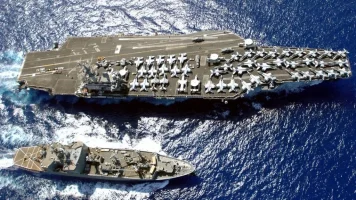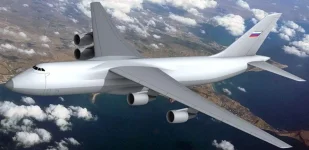- Views: 5K
- Replies: 19
In a significant move to advance its indigenous fighter jet capabilities, India proposed a partnership with Japan on aero engine development during a Defence Ministers’ meeting held in Delhi on May 6, 2025.
This initiative is widely seen as a strategic step to secure a powerful engine for India's futuristic Advanced Medium Combat Aircraft (AMCA), with speculation pointing towards Japan's IHI XF9 engine.
The proposal highlights India's determination to equip its 5.5-generation stealth fighter, the AMCA, with cutting-edge propulsion technology. Furthermore, it signals a deepening of defence cooperation between India and Japan, nations that share common strategic interests in the Indo-Pacific region.
An advanced fighter engine is a critical component for modern air dominance, and this collaboration could provide a substantial boost to India's air power ambitions.
The IHI XF9, developed by Japan’s Acquisition, Technology & Logistics Agency (ATLA) and IHI Corporation for Japan's own next-generation fighter aircraft, presents technical specifications that appear well-suited for the AMCA.
Publicly available information from ATLA in 2018 indicated that the XF9 prototype could achieve a military thrust of 11 tons (approximately 107 kN) and 15 tons (around 147 kN) with its afterburner engaged.
Notably, the engine is designed with adaptability, allowing its thrust to be scaled up or down. Japan has also outlined ambitions for a future fighter engine capable of reaching 20 tons of thrust (about 196 kN), a performance level that would align with the high-performance requirements of the AMCA.
India's AMCA is currently under development by the Defence Research and Development Organisation (DRDO) in conjunction with Hindustan Aeronautics Limited (HAL).
As the nation's first indigenous stealth fighter, the AMCA is envisioned to possess capabilities such as high thrust for agility, efficient supercruise (supersonic flight without afterburners), and low-observability characteristics to match contemporary aircraft like China’s J-20.
While prototypes of the AMCA are expected to initially fly with General Electric F414 engines (providing 98 kN of thrust), these are viewed as an interim solution. For the final production versions, India is seeking a more potent engine, likely in the 110-130 kN thrust range, making a collaboration on an engine like the XF9 a potentially attractive option.
The adaptable nature of the XF9 engine is a key factor making it a strong candidate for the AMCA project. Its modular design means it could be specifically tailored to meet the AMCA's distinct operational needs, including sustained supercruise flight and stealth features such as reduced heat signatures.
Additionally, Japan's considerable expertise in advanced materials science and sophisticated manufacturing processes could prove invaluable in helping India overcome long-standing challenges in developing its own jet engine technology, an area that has seen slower progress compared to airframe design.
Despite the promising nature of this proposal, various challenges and uncertainties persist. India has not officially named the specific engine programme it is targeting for the AMCA, leading to the current speculation around the XF9.
The AMCA programme has encountered previous delays in finalizing its engine choice, with earlier discussions involving companies from the United States, France, and the United Kingdom not culminating in concrete partnerships.
India's own efforts to develop an indigenous engine, the Kaveri, led by the Gas Turbine Research Establishment (GTRE), have also faced significant hurdles in achieving the necessary thrust levels after many years of development.
A potential collaboration with Japan on the XF9 or a derivative could offer a pragmatic way forward, merging India's growing aerospace industrial base with Japan's proven advanced technology. However, a significant consideration remains Japan's historically strict controls on the export of defence technology, influenced by its pacifist constitution.
While Japan has demonstrated increased flexibility in recent years, notably through its participation in the Global Combat Air Programme (GCAP) with the United Kingdom and Italy, any transfer of sensitive XF9 engine technology to India would necessitate thorough negotiations and high-level political agreement in Tokyo. The success of this proposed venture will depend on navigating these diplomatic and regulatory landscapes.



